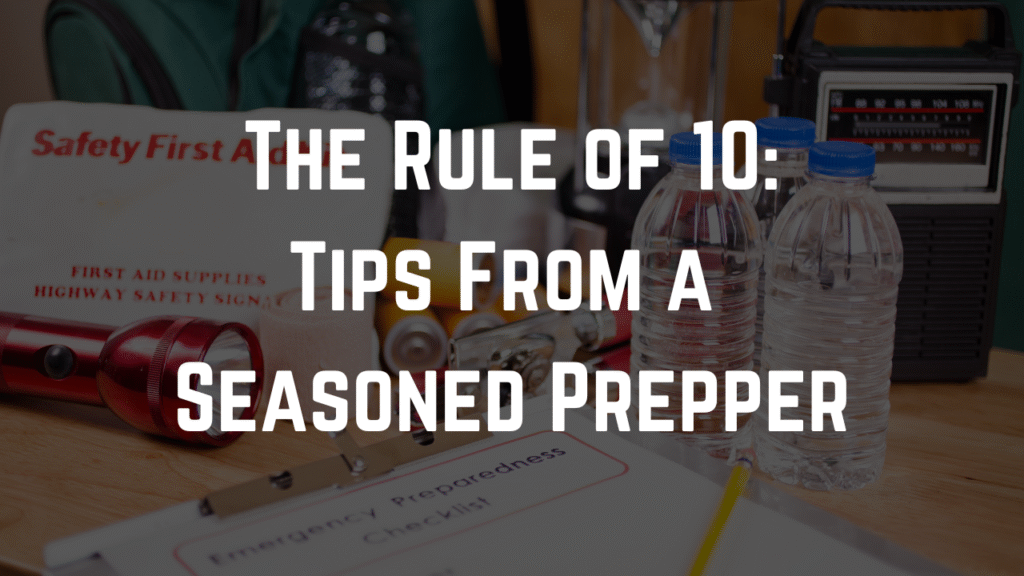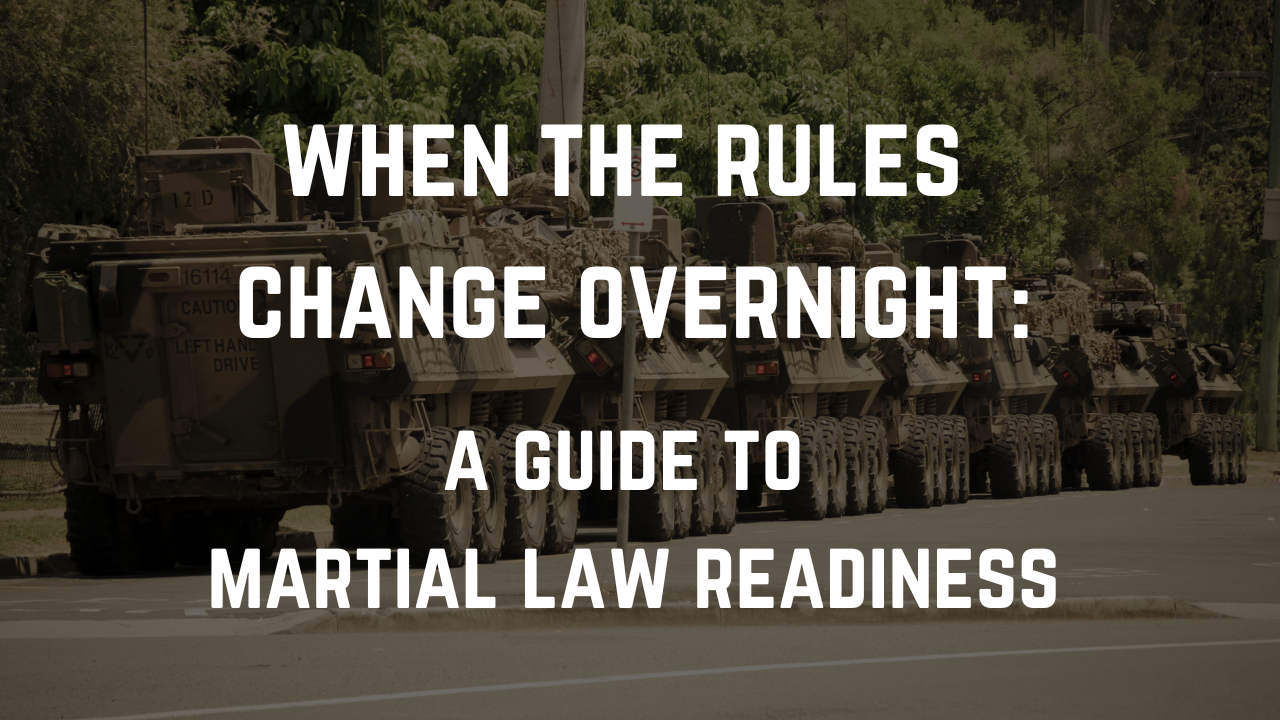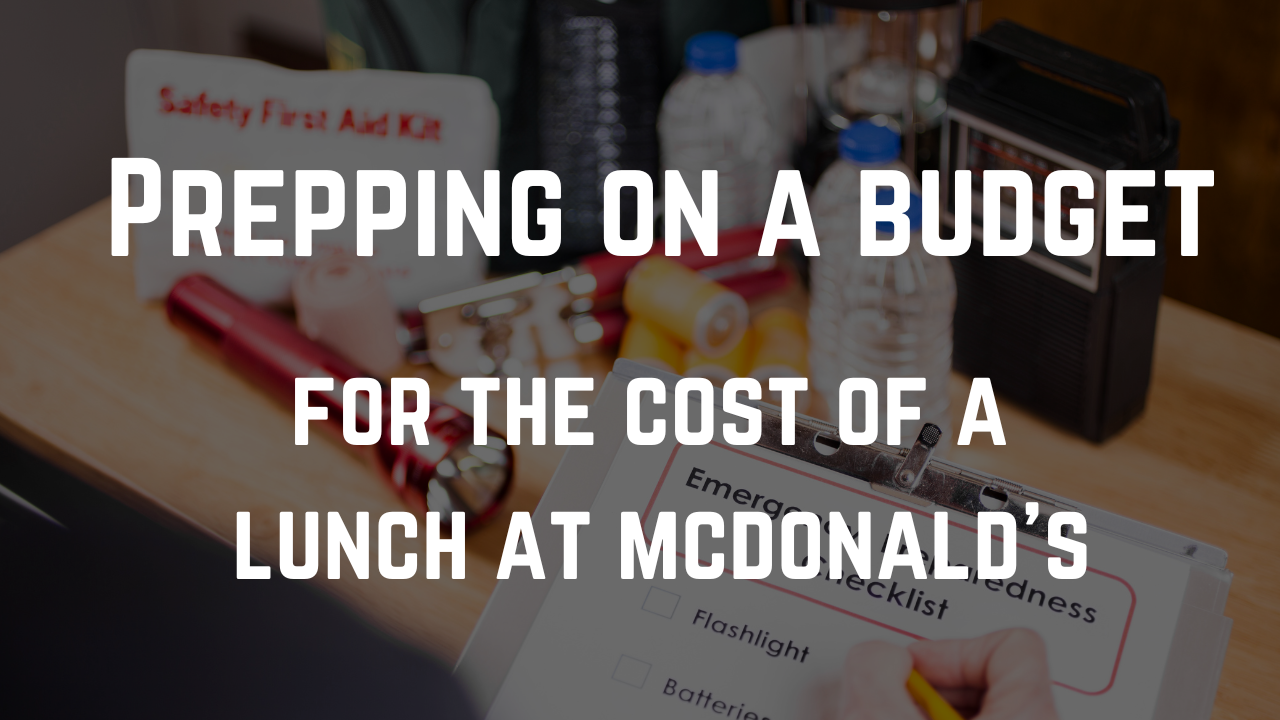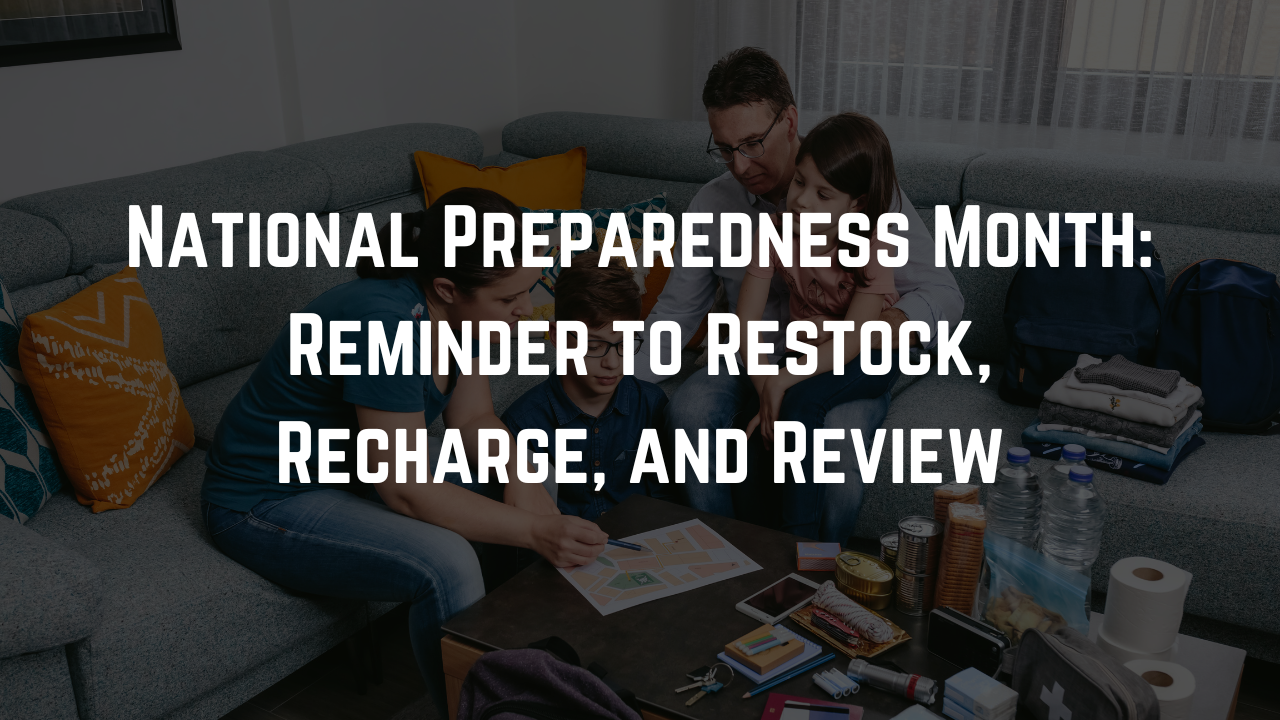
We’re excited to feature this guest blog from Preston I, a longtime prepper bringing decades of hands-on experience and practical advice!

By Preston I.
Preparedness expert with over 40 years of survival experience in Scouting, military service, survival training, and community leadership.
As a seasoned prepper, I follow what I call the “Rule of 10”— ten core principles that guide effective preparedness.
I’ve been preparing since 1982, with experience that includes:
- 15 years in Scouting (first as a Scout, later as an adult leader)
- Service in an infantry unit in Vietnam
- Two week-long survival schools
- Leading a 20-family Mutual Assistance Group (MAG) for five years
- A lifelong commitment to Just-in-Case (JIC) preparedness
These tips are not theory—they’re drawn from lived experience. If you’re new to preparedness, here’s my Rule of 10.
Tip 1: The Rule of Zero — Defense Matters
Rule of Zero means how much of your preps are yours if you can’t defend them. Remember, in many scenarios most people will have little to nothing prepared to survive an event and in desperation will seek out those who have stores to ‘remove ownership.’
Your willingness to survive means your ability and willingness to protect what you have spent considerable effort and expense gathering. Develop skills to use various weapons to ward off possible attempts to steal yours. Remember, it is not yours if you can’t defend it. Harden your resolve to protect you and yours.
Tip 2: The Rule of One — Keep Quiet
The Rule of One is the first rule of prepping… never tell anyone you are prepping. If something goes down, that person knows where to go along with everyone else they told. I would never have a podcast or YouTube channel with prepping pointers because that could be used to track me down later to “remove ownership’ of my preps.
Tip 3: The Rule of Two — Redundancy Saves Lives
As a strategic measure, the implementation of the “Rule of Two” is recommended, encompassing redundant systems for all critical resources, including communication devices, weaponry, and power sources.
This approach necessitates the development of a comprehensive contingency plan, or “Plan B,” which includes the strategic deployment of caches to safeguard backup resources, such as supplies and weaponry, in anticipation of unforeseen circumstances.
Considering the established operational philosophy of “Just In Case” (JIC), the identification and implementation of a personal backup strategy is essential.
Tip 4: The Rule of Three — Prioritize Essentials
As a critical preparedness measure, we adhere to the Rule of Three, which underscores the importance of prioritizing essential resources. Given the human body’s limitations—three minutes without air, three days without water, and three weeks without food—securing a reliable water supply and purification methods is paramount.
The efficacy of any stored food reserves is negated by dehydration. We recommend a minimum of two gallons of potable water per person, per day, to ensure adequate hydration.
Tip 5: The Rule of Four — Layer Water Purification
Regarding water purification, the following methodology is recommended, adhering to the “Rule of Four”: a four-layered filtration system consisting of, from base to top, cotton material, crushed charcoal (or activated charcoal for enhanced efficacy), sand, and pebbles.
Charcoal’s absorptive properties facilitate the removal of toxins, while sand and pebbles act as a physical barrier to remove particulate matter.
In the absence of a filtration system, it is recommended to boil water from tributaries, ponds, and rivers for a minimum of three minutes at a rolling boil to ensure purification. While the Center for Disease Control and Prevention (CDC) recommends one minute, survival training programs and scouting protocols typically advise a three-minute duration.
For pool water, a minimum boiling time of 15 minutes is advised to mitigate the presence of potentially harmful chemicals.
Alternatively, water can be exposed to UV purification by placing it in a clear plastic bottle and leaving it in direct sunlight for eight hours.
Tip 6: The Rule of Five — Act Fast in Danger
Tip 7: The Rule of Six — Think Through Scenarios
The Rule of Six is a survival technique that involves keeping six possibilities in mind and learning from new data about each one. The idea is that this can help you notice more data and make more responsible decisions.
Plan your steps: what will you do first? Second? Take the time and walk through each situation. Look at all possible events and conduct a mental Risk Assessment.
Tip 8: The Rule of Seven (7/10) — Time and Radiation
If the event is a nuclear exchange remember the 7/10 Rule.
Many of you heard the 7/10 Rule of Thumb: for every 7-fold increase in time after nuclear detonation, there is a 10-fold decrease in the radiation exposure rate. In other words, when the amount of time is multiplied by 7, the exposure rate is divided by 10.
Time is on your side. By the way, a dosimeter is a device that can measure the absorbed dose of radiation but only if it was exposed to the same radiation event as the affected person.
A device such as a Geiger counter can be used to test people to see where in the body radioactive particles are located but does not measure the level of accumulated exposure. For $20 you can purchase a wallet-sized dosimeter for reference.
A Radiologic Monitor can be purchased on Temu for $30. By the way, a Spiderwort plant can detect radiation. The pedestals turn bright pink when exposed to radiation. So, an inexpensive plant can display the presence of radiation.
Tip 9: Avoid Common Prepper Mistakes
Rather than a rule… my ninth pointer is the classic mistakes preppers often make.
I would like to share Amber Williams blog US Preppers response to this. Learn from others’ missteps:
- Don’t prepare for one kind of event or date. That makes perfect sense because we don’t know—we just suspect.
- Don’t show off your prepping supplies. As mentioned in my previous post, you have lost OPSEC once people know where and what you have.
- Don’t plan to become a criminal. Desperate conditions can drive desperate behaviors—don’t cross the line. Yes…the NSA does indeed have an algorithm tracking certain words used in phone calls. Seriously.
- Don’t believe owning a gun is all you need. It is one tool in your defense—take the time to get training and practice its use to develop muscle memory and spontaneous response.
- Don’t think your home is safe enough. If you plan to Bug In, create an obscure fortification. Involve a few neighbors without disclosing your stores. Develop a Redoubt Plan with at least three rings or layers of defense perimeters. Consider Early Warning, then Early Detection, then Early Resistance. This means warn them away; if that fails, then detect their presence, if that fails then restrict their movement.
- Don’t prep alone. Enlist your family. There are many advantages to involving them early. I am a big Mutual Assistance Group (MAG) fan.
- Don’t become overwhelmed. Start with water..then food…then defense…then essentials. The old saying is ‘Beans, Bullets and Band-Aids.’
Tip 10: The Rule of Ten — Grow What You Eat
When stored food runs out, replenishment is key. Each adult needs roughly 200 square feet of garden space for vegetables and fruits. Raised beds and grow bags work well. Follow these 10 garden steps:
- Choose location and layout
- Decide what to plant
- Prepare the area
- Stock supplies (for multiple seasons)
- Test and amend soil
- Prepare planting beds
- Select sturdy, high-yield plants
- Plant strategically
- Cultivate and maintain
- Harvest and preserve
Extra Pointers from Experience
- Oil of Oregano is a great antibiotic. Don’t let a cut or infection take you out. It is hard to accumulate antibiotics without a script but oil of oregano is an effective alternative.
- Related to the above and regarding hard-to-secure meds, a company called JASE out of Canada will fill your med needs without a physical script. It is better than the low-quality fish antibiotics with no FDA oversight that preppers have been encouraged to buy for years. You fill out a questionnaire and answer some questions online and then you have a one-year supply of meds (including antibiotics). The prices are usually affordable.
- Solar motion lights and driveway motion alerts are good for about 1000 to 2500 feet. You want early detection around your home.
- A boxed wall made of two pieces of ¾ inch plywood with a six-inch gap filled with sand and small pebbles makes a great ballistic barrier. We experimented with multiple-sized rounds and found none passed through except a .50 cal BMG. You can enhance the barrier with a layer of composite fencing on both sides. Works like a charm. Place the sand in polyester sandbags to restrict leakage from a shot. A load of sand is around $15/ton.
- Don’t rely on ‘walkie-talkies’ for much more than a couple miles or so. They are line-of-sight dependent called Simplex. For a longer distance get a Ham license and rig with at least 25-50 watts which should be good for about 30-40 miles with a good beam antenna. Find Repeaters in your area to boost that signal. Remember—the higher the wattage and mast length, the better the coverage


